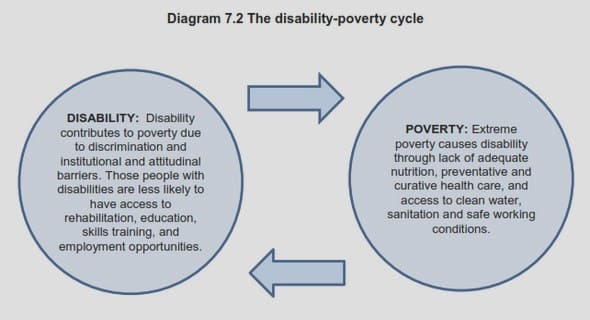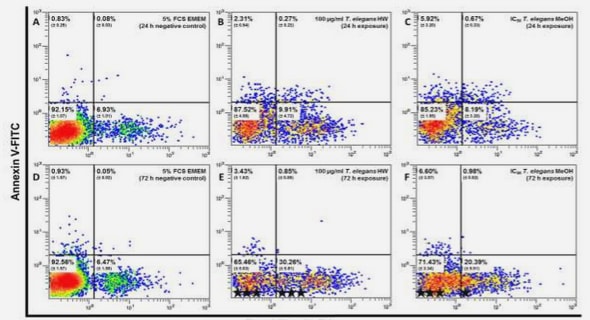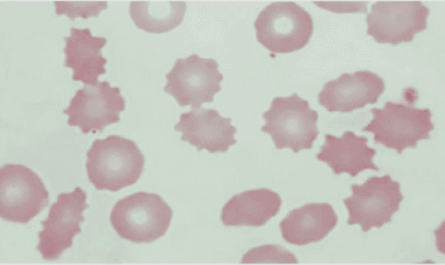Get Complete Project Material File(s) Now! »
Notes on Molecular Cell Biology
In this chapter we brie y introduce the most important concepts on molecular cell biology that we used throughout the thesis. Notably, we have mainly focused on gene expression, its regulation, and on some techniques used to measure gene products. For more details on the molecular biology of the cell we remand to [12, 13].
The Cell
All living organisms are made of cells. Cells are small units (mostly 1 100 m), enclosed by a membrane and lled with a concentrated aqueous solution of chemicals. Each cell posses the same genetic information of the parent organism and this information, stored in DNA, is passed on to the daughter cells during cell division.
Organisms may consist of just one cell, and they are called unicellular, or they may be multicellular. Multicellular organisms are typically organized into tissues, which are groups of similar cells arranged so as to perform a speci c function in addition to the housekeeping processes common to all cells.
In this thesis we will not address cell di erentiation, i.e. formation of cell types in a multicellular organism, but we will only discuss the general (housekeeping) aspects of cell components and functions.
Prokaryotes and Eukaryotes
Cells are divided into two categories depending on the way the genetic material (DNA) is organized within them.
E. coli as model organism
It is thought that all cells descended from a common ancestor [12]. Hence, the knowledge gained from the study of one organism allows us to better understand others, even our-selves. But some organisms are more convenient than others to study in the laboratory. This is because some are easier to genetically manipulate and reproduce faster; others are multicellular but transparent and so biologists can easily watch the development of their tissues and organs.
Molecular biologists have focused on Escherichia coli (E. coli for short) as a model organism for prokaryotic cells. E. coli is a small, rod-shaped bacterium that normally lives in the gut of humans and other vertebrates, but it can be grown easily in a simple nutrient broth in a culture bottle. E. coli is able to grow in variable chemical conditions and it reproduces rapidly (approximately one generation in 20 minutes). The bacterium E. coli was one of the first organisms to have its complete genome sequenced [25]. Its genetic information is stored in a single, circular double-stranded molecule of DNA, approximately 4.6 million nucleotide pairs long, and it makes 4300 different proteins.
The molecular functioning of E. coli is better understood than any other organisms and most of our knowledge of the fundamental mechanisms of life (how cells replicate their DNA, how they decode these genetic instructions to make proteins, etc.) has come from studies on it. In fact, although human cells are eukaryotic cells, subsequent research has con rmed that basic molecular processes occur in the same way both in human and in E. coli cells [12].
Gene expression: from DNA to Protein
The central dogma of molecular biology says: \DNA makes RNA, RNA makes protein, and proteins make the cell » [50]. This key paradigm of molecular biology states that the ow of information in gene expression is from genes encoded by DNA to mRNA by transcription and from mRNA to protein by translation (see Figure 2.4). At any given time, and in any given cell of an organism, thousands of genes and their products (RNA, proteins) actively participate in an orchestrated fashion to generate the macromolecular machinery for life.
Transcription: from gene to RNA
The genome, i.e. the genetic information of an individual, describes all the proteins that are potentially present in every cell of a given organism. This information is en-coded in the DNA molecule, which is a double-stranded helix made of alternating sugars (deoxyribose) and phosphate groups (related to phosphoric acid), with the nucleobases (guanine(G), adenine(A), thymine(T), and cytosine(C)) attached to the sugars (see Fig-ure 2.5).
The sugar-phosphate backbones of the two DNA strands form a uniform helix, with strands placed in opposite directions. The strands are held together by hydrogen bonds between opposing bases according to the base pair rule: A is always paired with T and G is always paired with C.
Within cells, DNA is organized into long structures called chromosomes. During cell cycle these chromosomes are duplicated in the process of DNA replication, providing each cell its own complete set of chromosomes.
The rst step in the synthesis of protein is transcription and it consists in copying the nucleotide sequence of a gene into RNA (ribonucleic acid).
Like DNA, RNA is a polymer made of four di erent nucleotides . It di ers from DNA in three respects:
1. whereas DNA is always a double-stranded helix, RNA is single stranded;
2. the nucleotides in RNA are ribonucleotides, i.e they contain the sugar ribose rather than deoxyribose;
3. although, like DNA, RNA contains the bases adenine (A), guanine (G), and cyto-sine (C), it contains uracil (U) instead of thymine (T) found in DNA.
All of the RNA in a cell is made by transcription.
The enzyme that carries out tran-scription is called RNA polymerase (RNAP). RNAP, to begin transcription, must be able to recognize the start of a gene, called promoter, and bind steadily to the DNA at this site. Then, RNAP moves stepwise along the DNA, unwinding the DNA double helix to expose the bases on each DNA strand. As RNAP progresses, it adds nucleotides one by one to the RNA chain using an exposed DNA strand as a template. Chain elon-gation continues until RNAP meets a stop site in the DNA, the terminator, where the enzyme halts and releases both the DNA template and newly made RNA chain. The resulting RNA transcript is thus single-stranded and complementary to one of the two DNA strands.
Table of contents :
1 Introduction
1.1 Motivations
1.2 Contributions
2 Notes on Molecular Cell Biology
2.1 The Cell
2.1.1 Prokaryotes and Eukaryotes
2.1.2 E. coli as model organism
2.2 Gene expression: from DNA to Protein
2.2.1 Transcription: from gene to RNA
2.2.2 Translation: from RNA to protein
2.3 Regulation of Gene expression
2.3.1 Transcriptional control
2.3.2 Post-transcriptional control
2.4 Measurement Techniques
2.4.1 mRNA quantication
2.4.2 Protein quantication
2.4.3 Measurement limitations
3 Modelling Genetic Regulatory Network Systems
3.1 Boolean Models
3.1.1 Synchronous and Asynchronous networks
3.1.2 Graph theoretical representation
3.1.3 Example: Boolean bistable switch
3.2 Ordinary Dierential Equation (ODE) Models
3.2.1 Quasi-steady-state assumption of mRNA concentration
3.2.2 Example: ODE bistable switch
3.3 Piecewise Linear (PL) models
3.3.1 Dynamical study of PL systems
3.3.2 Solutions and Stability in Regular Domains
3.3.3 Solutions and Stability in Switching Domains
3.3.4 Example: PL bistable switch
3.4 Stochastic Models
3.4.1 The Chemical Master Equation (CME)
3.4.1.1 Stochastic simulation algorithm (SSA)
3.4.2 The chemical Langevin equation (CLE)
3.4.3 Example: CME and CLE bistable switch
3.5 Final comments
3.5.1 Deterministic Vs stochastic models
3.5.2 Quantitative Vs qualitative models
4 A Simple Model to Control Growth Rate of Synthetic E. coli during the Exponential Phase: Model Analysis and Parameter Estimation
4.1 Introduction
4.2 The Open-loop Model
4.2.1 Growth rate
4.2.2 cAMP-CRP activation
4.2.3 CRP synthesis
4.2.4 CGEM synthesis
4.2.5 Proteins removal
4.3 Qualitative Analysis of the Open-loop Model
4.3.1 Open-loop model in glucose growth
4.4 Growth rate expression for exponential phase
4.5 In silico Identiability Analysis of Growth Rate
4.5.1 Problem Statement
4.5.2 Generation of Simulated Data Sets
4.5.3 Model Parametrization and Global Optimization
4.5.4 In Silico Practical Identiability Analysis
4.6 Conclusions
5 Controlling bacterial growth: in silico feedback law design to re-wire the genetic network
5.1 Introduction
5.2 Piecewise linear models with dilution
5.2.1 Solutions in Regular Domains
5.2.2 Solutions in Switching Domains
5.2.3 Equilibria and Stability in Regular Domains
5.2.4 Equilibria and Stability in Switching Domains
5.3 Introduction to the control problem
5.4 Open-loop model
5.4.1 Growth rate
5.4.2 cAMP-CRP activation
5.4.3 CRP synthesis
5.4.4 RNAP synthesis
5.4.5 CRP and RNAP removal
5.5 Qualitative analysis of the open-loop system
5.5.1 Open-loop system in glucose growth
5.5.2 Open-loop system under an alternative carbon source
5.6 Closed-loop model
5.7 Qualitative analysis of the closed-loop system
5.7.1 Closed-loop system in glucose growth
5.7.2 Closed-loop system in maltose growth
5.8 Inverse Diauxie
5.9 Conclusions
6 Switched piecewise quadratic models of biological networks: application to control of bacterial growth
6.1 Introduction
6.2 Piecewise Linear systems overview
6.3 The growth rate model
6.4 The Switched Piecewise Quadratic (SPQ) system
6.5 The PQ subsystem: dynamical study
6.5.1 Solutions and Stability in Regular Domains
6.5.2 Solutions and Stability in Threshold Domains
6.6 Stability Analysis of the SPQ system
6.7 Open loop control of the RNAP-ribosomes system
6.7.1 SPQ model of the open-loop control system
6.8 Conclusion
7 Attractor computation using interconnected Boolean networks: testing growth models in E. Coli
7.1 Introduction
7.2 Methodology
7.2.1 From discrete to Boolean models
7.2.2 Dynamics of Boolean models
7.2.3 Interconnection of Boolean models
Transition graphs and semi-attractors
The asymptotic graph
7.2.4 Attractors of an interconnection
7.3 Application: a model for E. Coli growth mechanism
7.3.1 E. Coli nutritional stress response module
7.3.2 The cellular growth module
7.3.3 System interconnection
7.4 Results
7.4.1 General properties
7.4.2 Growth Rate limited by ribosomes or RNA polymerase
7.4.3 Growth Rate limited by bulk proteins
7.4.4 Model discrimination
7.4.5 Dynamical behaviour
7.5 Conclusions
8 A coarse-grained dynamical model of E. coli gene expression machinery at varying growth rates
8.1 Introduction
8.2 E. coli GEM network: biological description
8.2.1 Ribosomes synthesis and function
8.2.2 RNAP synthesis and function
8.2.3 Proteins synthesis and function
8.3 Mathematical background
8.3.1 Transcription
8.3.2 Translation
8.3.2.1 Translation of nascent mRNA
8.3.2.2 Translation of completed mRNA
8.3.2.3 Comments on ribosome engaged in translation
8.3.3 Final conclusions
8.4 E. coli GEM dynamical model
8.4.1 rnn gene expression model
8.4.2 rpoBC gene expression model
8.4.3 bulk gene expression model
8.4.4 Complete dynamical model of E. coli GEM
8.5 Model calibration
8.5.1 Experimental data
8.5.2 Parameters taken from literature
8.5.3 Calculated growth-rate-dependent parameters
Average DNA per cell:
Individual gene copy number per cell:
8.5.3.1 Promoter concentration of rnn operon
8.5.3.2 Promoter concentration of rpoBC genes
8.5.3.3 Promoter concentration of bulk genes
8.5.3.4 Promoter concentration of non-specic binding sites
8.5.4 Estimated parameters
8.6 Free RNAP and Free ribosomes
8.7 Model reduction
8.8 Conclusions
9 State estimation for gene networks with intrinsic and extrinsic noise: A case study on E.coli arabinose uptake dynamics
9.1 Introduction
9.2 Stochastic modelling of genetic networks
9.3 Case study: E.coli arabinose uptake dynamics
9.4 Gene network state estimation
9.4.1 The Square-Root Unscented Kalman Filter
Prediction
Measurement update
SRUKF Initialization
9.5 State estimation: Simulation results for the E.coli arabinose uptake system189
9.5.1 Comparison of SRUKF and PF
9.5.2 Performance of the SRUKF in presence of extrinsic noise
9.6 Conclusions
10 Conclusions and Perspectives
10.1 Qualitative models
10.2 Qualitative control strategies
10.3 Quantitative models
10.4 Parameter estimation
10.5 Stochastic models and state estimation
10.6 Perspectives
10.6.1 Qualitative control: application to real data
10.6.2 Identiability, sensitivity analysis and validation of GEM model
10.6.3 Combining qualitative and quantitative formalisms for control purposes
10.6.4 Further investigation of dynamical growth rate models
10.6.5 Filtering applications of GRN models
A List of Publications
Bibliography


